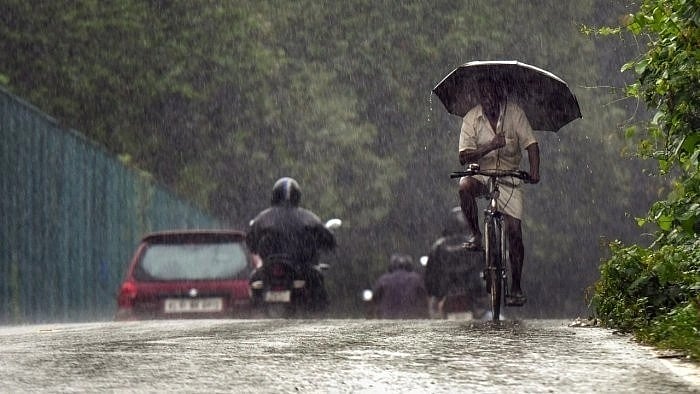
Representative image of rains.
Credit: PTI File photo
There is rising concern over the deficiency in rainfall and the slow progress of the monsoon ever since it arrived in the subcontinent about three weeks ago. According to the India Meteorological Department (IMD), the country has received 20 per cent less rainfall since the start of the monsoon on June 1, and it has not made any significant progress between June 12 and 18.
Its progress seems to have stalled in Maharashtra. Though the southern peninsula got above-normal rainfall, other parts of India have seen a 15-70 per cent shortfall. Even in the south, there are many areas, including parts of North Karnataka, that have received less-than-normal rainfall. The IMD has suggested that the rainfall could be below normal in June. June and July are important months for agriculture because most of the sowing for the kharif crop takes place then. The situation should cause concern, though there is no need for alarm yet.
Agriculture across large parts of India depends on the monsoon rains. The impact of a deficient or delayed monsoon will be immediately felt in many parts of central India, Uttar Pradesh and Bihar, where irrigation is far from adequate. These areas substantially contribute to the country’s agricultural production as rice, wheat, sugarcane, and vegetables are widely cultivated there. They are experiencing temperatures between 42 and 46 degrees Celsius. The dry weather, heat wave conditions, and the lack of rain will impact agriculture and much more. Nearly half of India’s agricultural land is rain-dependent as it lacks irrigation infrastructure. Reservoirs are at their lowest levels. They have not seen levels rising much even in areas covered by the monsoon. Apart from irrigation, drinking water supply and power production will be affected by water shortage in the reservoirs.
One major impact of a deficient monsoon will be on food prices. Last year’s below normal and wayward monsoon hurt food production and fuelled a hike in food prices. Food inflation, which has risen to high levels in recent months, still remains high at 7.9 per cent. Vegetable inflation has been very high at 27.3 per cent. Another scanty monsoon will send food inflation soaring, and the poorer sections will be hit the hardest. Governments will have to start planning for a deficient rainfall situation. The IMD is sticking to its forecast of a normal monsoon and eventually it may be proved right. But the weather is known to be fickle, we don’t understand it fully, and the climate is changing.
